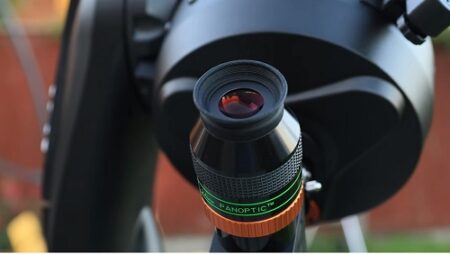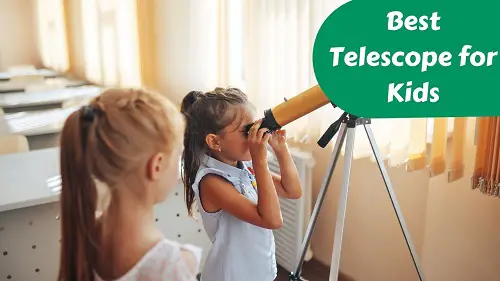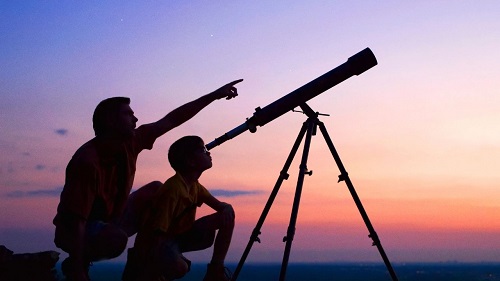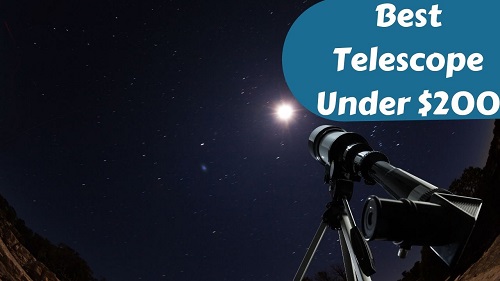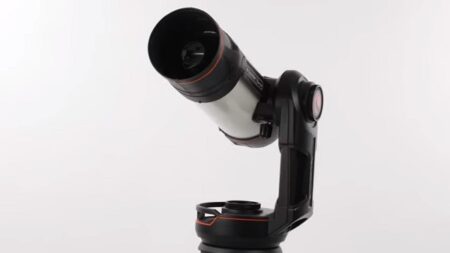Many people never even deem the necessity of a telescope eyepiece as they think those are not of any use. But let me tell you that without a powerful eyepiece, your telescope is not as much as efficient that it should be.
A telescope eyepiece allows you to focus all the light the telescope gathers in it. Also while any planetary viewing, both focal length, and apertures play a pivotal role. Only an eye-piece can do that for you.
Therefore, looking for the best telescope eyepiece for viewing planets is always a top priority. Today, I am not just going to talk about some popular products in the market. Alongside that, I am going to talk about all the things you need to know before you purchase your best telescope eyepiece set. Well, let us look for the perfect product to make planetary views great.
The best telescope eyepiece for viewing planets include:
Jump To Right Section
- Celestron X-Cel LX Series Eyepiece
- Orion 8728 32mm Sirius Plossl Eyepiece
- SVBONY Telescope Eyepiece
- Celestron 1.25” Omni Series Plossl Eyepieces
- Gosky 1.25 inch Plossl Telescope Eyepiece
- Baader Planetarium 24mm Hyperion Eyepiece
- Tele Vue 13mm Ethos 2″ / 1.25″ Eyepiece
- Explore Scientific 40mm Waterproof Eyepiece
- Meade Instruments 07742 Eyepiece
- Explore Scientific 82 Degree 4.7mm Eyepiece
At A Glance: Our Top Picks for Best Telescope Eyepiece for Viewing Planets
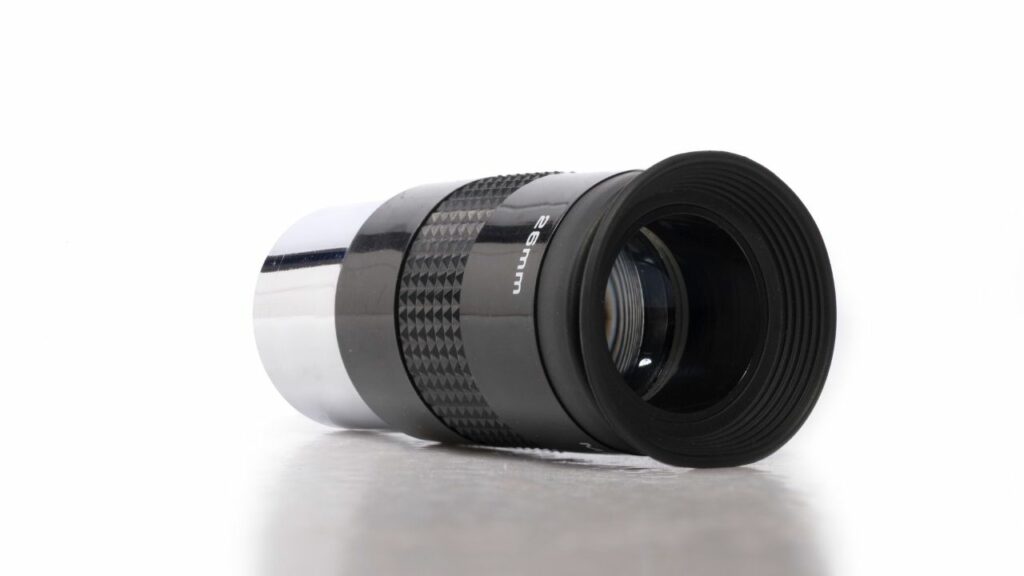
If you’re in a hurry, you can jump straight into our top picks (these are the telescope eyepiece for viewing planets that most people buy).
- SVBONY Telescope Eyepiece ( Check Price On Amazon ) -Top Pick -Most of the people like it
- Celestron X-Cel LX Series Eyepiece ( Check Price On Amazon ) -( Runner-up )
- Celestron 1.25” Omni Series Plossl Eyepieces ( Check Price On Amazon ) -( Runner-up )
- Tele Vue 13mm Ethos 2″ / 1.25″ Eyepiece ( Check Price On Amazon ) -( Runner-up )
- Tele Vue 24mm Panoptic Eyepieces (GREAT 24mm eyepiece) ( Check Price On Amazon ) -best zoom eyepiece
Reviews of the Best Telescope Eyepiece for Viewing Planets
1. Best Comfortable Eyepiece: Celestron X-Cel LX Series Eyepiece
Celestron is known as one of the best telescope eyepiece brands in the market. They are always introducing good quality eyepieces within a very moderate price range. Well, this model is great for planetary viewing.
To get a good view of any planet, the moon or deep-sky objects include a wide field of view, good coating, and other kinds of stuff. Until now, we were talking about 4-element optical eyepiece, but this one comes with 6-elements optical eyepiece.
Features and Benefits
This eyepiece is designed to ensure clear view of the objects. The field of view is quite moderate. A 60-degrees field of view is going to provide you great magnification and provide a bright crisp image almost to the edges.
The threaded rubber grip is non-slip, and you will get a good grip even if you are wearing a glove in your hand. Even the barrels are threaded to accept filters. This is featuring a pop-up rubber eye guard for providing comfort, and better viewing.
The multiple layers of high-transmission coating provide sharp and clear images. Alongside that, the flat surface of the eyepiece makes viewing comfortable for people who wear glasses. Overall, this is a great eyepiece for your telescope to observe planets such as Mars, Saturn, Neptune, or even the moon. Viewing planets experience is certainly going to be great.
Key Features
- Focal length: 5mm
- Field of view: 60° standard field of view
- Barrel size: 1.25″
- Coating: Plossl eyepiece
- Fully coated: High-transmission
Pros
- 60-degrees wide field of view
- Perfect details and crisp image
- Great for viewing moon, planets, and dark sky objects
- Non-slip threaded rubber grip
- Secure handling
Cons
- No eye relief
2. Best for Deep Space Viewing: Orion 8728 32mm Sirius Plossl Telescope Eyepiece
When you’re finding the best Plossl eyepieces in the market, this one should come first. Certainly, this 32 mm eyepiece is a perfect fit for just about any telescope. Whether you have a reflector, refractor or a Cassegrain; doesn’t matter, the eyepiece will fit just fine.
Features and Benefits
The eyepiece optics is multi-coated so that you get a bright, sharp image of any planetary view. It comes at a fair price point, and you will get great optical support for any viewing telescope, DSLR or binoculars.
The apparent field of view is 52 degrees, and may not be the widest of a field of view, but you can get a clear image of moon, planets or any deep sky object. All the images come in a surprising contrast. So, you will get a true 52-degree field of view. Images on the edges will not get blurry. Also, the eyepiece is threaded so that you can use any 1.25″ barrel filters.
Key Features
- Field of view: 52 degrees
- Focal length: 32 mm
- Barrel size: 1.25″
- Coating: Multi-coating
- Weight: 6.4 ounces
Pros
- 52-degree true apparent field of view
- Comes at a decent price
- Threaded for using 1.25” filters
- Can be used in just about any telescope
- High contrast, bright and clear image
Cons
- Can’t fit with fixed adapter
3. Best Budget Telescope Eyepieces: SVBONY Telescope Lens 4mm Telescopes Eyepiece
This is a great fully coated and best beginner telescope eyepiece to observe the lunar surface pit or planet surface. For the price of the eyepiece, it offers great support. Getting a wide-angle 52-degrees lens may cost you more than 50 bucks, and with this product, you get a 62-degrees lens.
Features and Benefits
You’ll be getting a 23 mm and 4 mm eyepiece, powerful and efficient. The edges of the lens are blackened so that it can gather as much light as possible. Just like the light-gathering option, the eyepiece comes with a dust protective cover. The interchangeable lens cover is very easy to use, and you can put them in your pocket if you want. So, the products are also portable.
FMC glass optics always increase light transmission. Alongside the fact that it is a wide-angle eyepiece, you will get a great and clear image of planets such as Mars, Jupiter, etc. Not just the planetary view, you can get a good view of Nebula, medium-sized star clusters, deep-sky targets, cloudy nebulas, and many more.
Last but not least, this is an aspheric eyepiece. This arrangement corrects the design, which means that the problem of distortion is solved. Not just the design, the build quality, and other powerful features make it one of the best budget telescope eyepieces. You don’t often get a good quality eyepiece in this moderate price point.
Key Features
- Focal length: 0.16 inch / 4mm
- Field of view: 62° standard 1.25” (31.75mm) fitting diameter
- Eye lens diameter: 0.39inch / 10mm
- Coating: Optical lenses
- Fully coated: High-definition
- Weight: 1.48oz / 0.09lb / 42g
Pros
- Wide-angle eyepiece
- Great within the budget
- 62-degree lens
- Aspheric structure
- Lightweight and portable
- Entry level eyepiece
Cons
- May be dim in some cases
4. Good for Mars Viewing: Celestron 1.25” Omni Series Plossl Eyepieces
It is known that the first impression is always very important, and this eyepiece looks great in the eye. The barrel has a glossy aluminum finish and the upper half have a matte gray finish. Also, the longer eyepiece comes with a rubberized ring so that you can easily grip the eyepiece with ease.
Not just that, the eyepiece comes with a knurled groove. For this reason, it will not fall off even if it is not tightened with the telescope. This Plossl eyepiece comes with 4 glass lens elements for reducing distortions and chromatic aberrations.
Features and Benefits
For the blackened edges, internal light reflection is reduced. Mainly, the eye relief varies with the lens. The 32 mm eyepiece has a 50 degrees field of view. Also, the 32 mm eyepiece has a wider angle of view.
Viewing the moon or any planet is crystal clear, and you will get sharp images. But the image might get blurry in the edges. This is mainly a Plossl eyepiece, so, watching the starry sky on steady watching conditions will be great. Any entry-level astronomer will get the best of view of the moon or planet.
Key features
- Focal length: 32mm
- Field of view: 50° standard 25″
- Coating: Plossl eyepiece
- Fully coated: Multi-layer
- Weight: 4 ounces
Pros
- Provides great magnification
- Good design
- Great for observing moon and starry sky
- Reflection, chromatic aberration free
- Provide sharp images
Cons
- May produce blurry image on the edges
- Will not get the full eye relief
5. Best Affordable Telescope Eyepiece: Gosky 1.25 inch Plossl Telescope Eyepiece
From the beginning, you are going to experience two factors with this Plossl eyepiece. The first thing is that you will see its several useful features. Also, it has a 4 element optical Plossl design. So, the image the eyepiece provides is sure to impress you. Anyway, the price is not too much for any kind of user.
Features and Benefits
Getting a 32 mm eyepiece within this price range is quite surprising. For me, this is one of the best Plossl eyepiece for money. Another vital thing is always going to be the focal length. Within a steady watching condition, you are getting the perfect and details of planets or the moon.
Yes, I know that this is not the best one but still this is one of the best in the market. To get a good quality image, the stars or the planets need to be above you. Also, the atmosphere plays a great role in observing.
It comes with a beautiful matte aluminum barrel and the blackened lens edges are going to reduce reflections. So, observing is comfortable. Even the field of view is fairly wider than you think.
The 32 mm version has a 50 degrees field of view. Comparing to the 40 mm version, this one is going to be the best choice. Also, the rubber eyecups provide great comfort for viewing planets with your refractor telescope.
Key Features
- Focal length: 32mm
- Field of view: 50° Standard 25″
- Coating: Plossl eyepiece
- Fully coated: Multi-layer
- Weight: 3.52 ounces
Pros
- Beautiful matte aluminum barrel
- Black edges on the lens for reducing reflections
- Great for magnification
- Wide field of view
- Perfect for refractor telescope
- Eye case for dust protection
Cons
- Not good for Dobsonian telescope
6. Excellent Viewing Cozy Eyepiece: Baader Planetarium 24mm Hyperion Eyepiece for 1.25” Focuses
While taking in lower-priced telescope eyepieces into consideration, this is always the best choice. The 7 elements Hyperion optical design helps you to get a crisp and sharp image of the planetary objects.
Also, the eyepiece enables color correction. Mainly, the focal length of the product is quite interesting, the 8 to 24 mm focal length changes according to your choice and click stops when you need it to.
Features and Benefits
This eyepiece will offer a great field of view. When the eyepiece is set to an 8 mm setting, you will get 68 degrees field of view, and when you set it to a 24 mm setting, you get 50 degrees field of view.
Unlike many other top eyepieces that don’t offer any eye relief, this model is different. It offers a 12 to 15 mm eye relief for comfort and efficiency. You will get the most comfort at just about any focal length. Even the Hyperion multi-coating is great for viewing your planetary objects with ease.
Key Features
- Focal length: 8 to 24 mm
- Field of view: 50 degrees to 68 degrees
- Coating: Hyperion multi-coating
- Eye relief: 12 to 15 mm
- Weight: 1 pound
Pros
- Consisting 7 elements optical design
- Outstanding color correction and crisp images
- Variable focal lengths
- Planetary viewing comfort
- Hyperion multi-coating
Cons
- Will not receive the 1.25 inches adapter
7. Best Telescope Eyepieces for Planetary Viewing: Tele Vue 13mm Ethos 2″ / 1.25″ Eyepiece with 100 Degree Field of View
Mainly, the innovative concept of this eyepiece makes it a good product for them who have an interest in astronomy. Enabling you to get a wide field of view, eye relief, full contrast, and crisp images whenever you are looking for details on a planet, it works great.
The first thing that is going to impress you is the 100 degrees apparent field of view. With the 15 mm eye relief, you are sure to enjoy the full field of view. Most of the eyepieces do not come with any eye relief. Anyway, this eyepiece offers great comfort for viewing and observing your planets.
Features and Benefits
Well, the eyepiece has a little weight to it, but not too much. You can watch DSO’s just like a cluster or galaxy via 2X magnification. Not just that, you will get just as much magnification you would want for planetary objects. Planetary viewing cannot get any better than this.
From the outlook, the eyepiece looks sturdy and durable. The best part about the eyepiece is always the wide field of view. For the AFOV, the eyepiece has gained popularity. Unlike any other cheap quality Plossl, this one is always producing crisp and bright photos.
Key Features
- Field of view: 100 degrees
- Focal length: 13mm
- Effective field stop: 22.3mm
- Eye relief: 15mm
- Barrel size: 2″/1.25″
Pros
- Great apparent field of view
- Comes with eye relief
- Crisp and bright image
- Get planetary images with just 2X magnification
Cons
- Has a little weight to it
8. Best for Quality Contrast: Explore Scientific 62 Degree 40mm Waterproof Eyepiece
As an outdoor and lifestyle company, Explore Scientific as the best telescope eyepiece brand is offering various astronomical instruments out there on the market. It may not look like that the product will have a lot of weight to it but it is quite heavy. Instead of that, it has a shorter focal length to add versatility to your telescope. A well-built design makes it durable for outdoor usage.
Features and Benefits
The eyepiece comes with a decent eye relief and a 68 degrees apparent field of view. Along with the eye relief, you are always getting the best quality image and can make the full usage of your field of view.
Anyway, I should tell you that even though the product claims to have 68 degrees field of view, you will get 62 degrees. The reason is that it has a ‘spaceship window’ effect on the edges. For this, you are not getting the full field of view.
This eyepiece is waterproof. Yes, I know you don’t use a telescope on rainy days or cloudy days. But you should remember that there are times when the eyepiece may come in contact with dew or water. Saving the eyepiece from dust is important. Also, saving it from water is equally important. Need not worry; the waterproof design will keep the eyepiece intact for sure.
Key Features
- Field of view: 62 Degrees
- Focal length: 40 mm
- Effective field stop: 22.3mm
- Barrel size: 1.25″
- Weight: 5.15 pounds
Pros
- Decent field of view
- Waterproof design
- 62 degrees field of view with spaceship window effect
- Decent eye relief
Cons
- A little bit heavy
9. Best Waterproof Telescope Eyepiece: Meade Instruments 07742 Series 5000 14mm Ultra Eyepiece
Among your valuable money spent on an eyepiece, this one is sure to be a luxury ride. Firstly, the design is unique, well-made, durable and waterproof. A premium quality eyepiece is sure to work great in any fast optical instrument. This one does the job for you. The contrast of the image the eyepiece produces is natural, and the color tone is all right.
Features and Benefits
The apparent field of view of this eyepiece is very large. An 82 degrees field of view will give you enough power to watch planetary details with ease. Alongside that, the 7 elements multicoated lens has blackened edges, and for this reason, reflection is reduced.
Not just that, you will get low chromatic aberration with the eyepiece. Among many best telescope eyepieces, this one can particularly attract people because of its sharp optimal performance.
Moreover, the eyepiece is threaded so that you can add astronomy filters on it. People wearing eyeglasses can use this eyepiece with ease as the eyepiece features a good quality eye relief. The eye relief is more than a type-6 nagler.
However, this is a waterproof eyepiece and the eyepiece ensures that you can use the product in dewy condition. To make things better, the eyepiece comes with a 1-year limited warranty.
Key Features
- Field of view: 82 degrees
- Focal length: 14 mm
- Barrel size: 1.25″
- Lens: 7 element
- Coating: Multi-coating
- Weight: 12 ounces
Pros
- Decent and sharp image quality
- Great for planetary details
- Comfortable eye relief
- Waterproof eyepiece
- Can add astronomy filters
Cons
- Need to use excessive barrel grease
- Eyepiece have little lateral color on the brightness
10. Best for Impressive Optics: Explore Scientific 82 Degree 4.7mm Eyepiece

Going on with high-end products can be a good idea. But many people always like to get things done with cheaper ones. Anyway, when you look for a 4.7 mm eyepiece, you need to keep a good amount of money.
Searching the cheap one will not get you anywhere near a crisp, bright, high-contrast image, especially when you are looking for a 4.7 mm eyepiece set. Well, this one is a high-end eyepiece. Though the product is pricey compared to other models in the market, it works fine and it will not disappoint you.
Features and Benefits
When it comes to the magnification, you will get a dazzling image to the edges of the eyepiece. It can pinpoint the stars while viewing on a steady viewing condition. The 82 degree true apparent field of view provides great details while watching planets or deep-sky objects.
The color and tone of the images are sharp and natural, except daylight. There is an orange tint from the Hyperion coating, and you cannot raise any objection. The reason is, when everything is dark, the orange tint will not be visible.
This is typical of all sorts of 4.7 mm eyepiece. Alongside the super optical support, the wider field of view comes in handy. There will be no noticeable distortions on the edges of the eyepiece. Maybe the price is something that you can nag about but the eyepiece works fine, and it is great for the money.
Key Features
- Field of view: 82 degrees
- Focal length: 4.7 mm
- Barrel size: 1.25″
- Coating: Hyperion coating
Pros
- Bright and crisp image
- Very wide field of view
- No distortions on the edges
- EP works fine for the money
- Can get view to the edges
Cons
- Pricey comparing to other models
Things to Consider Before Buying the Best Telescope Eyepiece for Viewing Planets
Even less powerful telescope can become significantly powerful with the help of a telescope eyepiece. Choosing the best telescope eyepieces in the astronomer’s market is always a hard nut to crack. As there are numerous options available, you will have a tough time choosing the right model for you.
Anyway, it’s not just about which model is the best rather it’s about which one suits your telescope the best. For this reason, you need to know what things you should have in your eyepieces.
Yes, looking for the best telescope eyepiece is certainly important, and you should search for that. But looking for the basics is equally important. Now, we are going to talk about the things you should look in terms of buying your telescope eyepiece.
Size of the Eyepieces
When you are looking for a telescope eyepiece, you need to know what type of telescope you are using. Anyway, when we talk about what type of eyepiece you should be looking at, we mainly talk about the focal length. Now, let’s consider discussing about some of the telescope eyepieces out there.
- 2 mm to 4.9 mm Eyepieces
These types of eyepieces will always produce high magnification, and you will need a steady watching condition. Without a steady observing condition, the eyepiece will produce larger magnification.
- 5 mm to 6.9 mm Eyepieces
These eyepieces are great for long focal length telescope and great for planetary details. But with steady observing conditions, the eyepieces will work for short focal length telescopes.
- 9 mm to 9.9 mm Eyepiece
These are designed mainly for shorter focal length telescopes and great for a planetary, lunar star, double star details.
- 10 mm to 13.9 mm Eyepieces
You can use these types of eyepieces on just about any focal length. Also, the eyepieces offer good background darkening so that one can easily study planetary nebula, small galaxies, planetary, and lunar details.
- 18 mm to 24.9 mm Eyepieces
Will work nicely on longer focal length telescope, and can show a wide planetary field or wide objects. But if you use it on a shorter focal length telescope, you will get mid-range magnification. Specially, you will get to see galaxy or large open clusters.
- 31 mm to 39.9 mm Eyepieces
It is used for larger focal length telescope, and for viewing large nebula, open clusters, Orion nebula, full lunar disk, large open clusters, and many larger objects. These eyepieces are great for locating things in the open sky. On the other hand, if you’re using shorter focal lengths, you can use the eyepieces for the wider starry sky field.
- 40 mm Eyepieces
These eyepieces offer great magnification. Also, you get to see great starry vistas, planetary details, starry field, extended nebulas with ease.
Types of Telescope Eyepieces – Which One Do You Need?
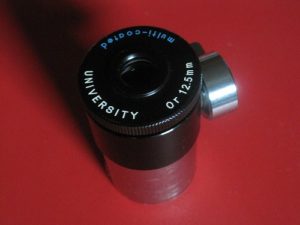
During your search for the best telescope eyepieces, you came across different models. But they all belong to a subtle part of any telescope. There are mainly 4 types of eyepieces available.
Plossl
Plossl is the most common type of eyepieces available in the market. Mainly, these are mostly expected as the best beginner telescope eyepieces and quite flexible. They offer a moderate field of view.
So, when you are looking for a great number of objects to look in the sky, then Plossl is always going to be the best choice. Plossl also comes in a wide range of focal lengths, and they can accommodate the different long focal lengths. Plossl also tends to have more eye-relief. For this reason, this type of eyepieces is comfortable to use.
If you want to know more about Plossl, just click here.
Orthoscopic
Best suited for observing planets and moons, Orthoscopic eyepieces designed mainly for reducing chromatic aberration and distortion. The field of view of this type of lenses is a flurry, and you don’t have to face issues such as over muddiness or star trailing.
But the field of view is very limited. In general, you get a 40 to 45 degrees field of view. Most astronomers use this type of telescope to observe planetary details rather than large objects.
Wide-Angle
Just like the name suggests, wide-angle eyepieces offer a wide-angle field of view. Viewing deep and muddy sky objects such as nebulae, deep sky clusters, always get easy with these types of eyepieces.
What type of field of view you get mainly depends on the exact design of the telescope. But they differ from 68 degrees to 120 degrees. These lenses always provide a clear and realistic image of a wide object such as the cosmos.
Barlow Lens
This is a very unique accessory, but we cannot refer it to an eyepiece. Attaching it to the telescope always increases the focal length and magnification of the telescope. The magnification can reach up to 2 times larger. Barlow lens offers more flexibility to your telescope.
Types of Telescopes
ED or Apo Refractor Telescope
Apo refractor is a versatile and lightweight instrument for viewing the starry night or the Milky Way. You can view the moon and other planetary details with ease. Going for 5 mm, 12 mm or 32 mm eyepieces should be great. But I recommend 24 mm eyepieces. Using a 2x Barlow lens will always increase the magnification.
Schmidt-Cassegrain Telescope
For the last 50 to 60 years, the Schmidt-Cassegrain Telescope is providing great support for amateur astronomers. Using 7mm, 18 mm or 24 mm focal length is going to be a perfect one for you. Using a 32mm is also going to be great as they will offer great magnification.
Dobsonian Telescope
For Dobsonian telescope, going for 4 mm, 10 mm, and 24 mm is always a good idea. Well, you can also use 32 mm eyepieces.
Focal Length and Magnification
Focal length mainly refers to the overall optical power a lens has to offer. Depending on the focal length, you get to know how much magnification power you’ll get.
Mainly, there are two focal lengths; one is the shorter focal length and the other larger focal length. Shorter focal length tends to offer more magnification. However, just magnifying stuff is not the only thing you need. So, having two or three eyepieces should be a great option. Why not get a good quality set?
There is a formula so that you can determine the magnification of your eyepiece and telescope. The formula is:
Telescope focal length (mm)/ Eyepiece focal length (mm) = Magnification of your telescope
Field of View
The term mainly indicates the measurement of the eyepieces coverage. Just like the human eyes, the telescope is always collect light from a wide-angle perspective. But the telescope needs to do it strategically so that it can collect enough light to view distant objects. Orthoscopic or Plossl eyepieces offer a lower field of view. So, going for the wide-angle ones is always going to be the best option.
Eye Relief
Eye relief determines comfort while you are looking at an image of the planetary object. A telescope contains several complex optical components, and together they provide your final image. Now, the distance between the last eyepiece and the image is called eye relief. The more the eye relief, it is more comfortable to watch the image.
Construction
Mainly, the construction depends on the manufacturer. But don’t forget that the construction quality will always affect the price level. So, it is normal that the better the quality, the greater the price. Looking for some good brands can be a bit of help to you as renowned brands generally offer top-quality products.
What Telescope Eyepiece Do You Need for Regular Usage?
It is almost known to all that astronomy is not all about magnifying distant objects. Depending on your viewing planetary objects, and what type of user you are, the type of lens becomes apparent. I talked about the 3 types of eyepieces. There are no universal indicators for any eyepiece for regular usage.
If you are just a beginner at using a telescope, going for Plossl is always a good idea. This type of telescope is best for regular day to day use. On the other hand, professional astronomers like to use Orthoscopic eyepieces. These eyepieces are good choice for viewing planetary details.
When it comes to our day to day life, and people are just fond of looking at the starry sky or getting a crisp image of everything, going for the wide-angle eyepiece is always wise option. Which eye-piece you should use regularly mainly depends on what type of user you are. But I think, Plossl and the wide-angle eyepiece is going to be the best choice.
Frequently Asked Questions (FAQ)
Are Dobsonian telescopes good for viewing planets?
Yes, the Dobsonian telescope is good for viewing planets. Especially, people who are amateur or beginners can use this telescope. The telescope can gather a lot of light around it and therefore, viewing planets gets easier.
What is a 2X Barlow lens?
Barlow lens is a very useful lens that will easily connect with your eyepiece. A 2X Barlow is a very common type of lens that will enhance double the magnification of your eyepiece.
What mm eyepiece is available for telescope?
Mainly, you will find various eyepieces such as 2 mm to 4.9 mm eyepieces, 5 mm to 6.9 mm eyepieces, 7.9 mm to 9.9 mm eyepieces, 10 mm to 13.9 mm eyepieces, 18 mm to 24.9 mm eyepieces, 31 mm to 39.9 mm eyepieces, and 40 mm eyepieces.
How powerful does a telescope have to be to see the rings of Saturn?
To view the rings of Saturn, even the smallest telescope needs to be in 25X power. If you get a 3-inch telescope at 50X magnification, you will be successfully able to see the rings of Saturn. ( Here you can read my article on how to see the saturn ring with telescope)
How do I choose a telescope eyepiece?
To choose your best telescope eyepiece set, you need to check out the field of view, magnification, barrel size, what type of lens you need and the price as well.
Final Verdict
An eyepiece can even make a common-type telescope stand out from any other high-end telescope. People who cannot purchase a high-end eyepiece need to rely on the built-in telescope eyepiece. In this article, I walked through the thinking process and the important things you need to consider before purchasing your best telescope eyepiece for viewing planets.
While reviewing, I took these considerations in mind and tried to inform you about the facilities you are going to get with the top picks. Mainly, everything depends on your choices and considerations. I hope this content will help you to connect with the thinking process and meet the desired specifications.
Hi, Daniel Here! When I’m not busy working at my own startup, you may find me roaming around the Univers and whats beyond our sky, telescope is a must.

![Best Telescope Eyepiece for Viewing Planets [Budget-Friendly]](https://besttelescopereview.com/wp-content/uploads/2020/02/Best-Telescope-Eyepiece-for-Viewing-Planets.jpg)










